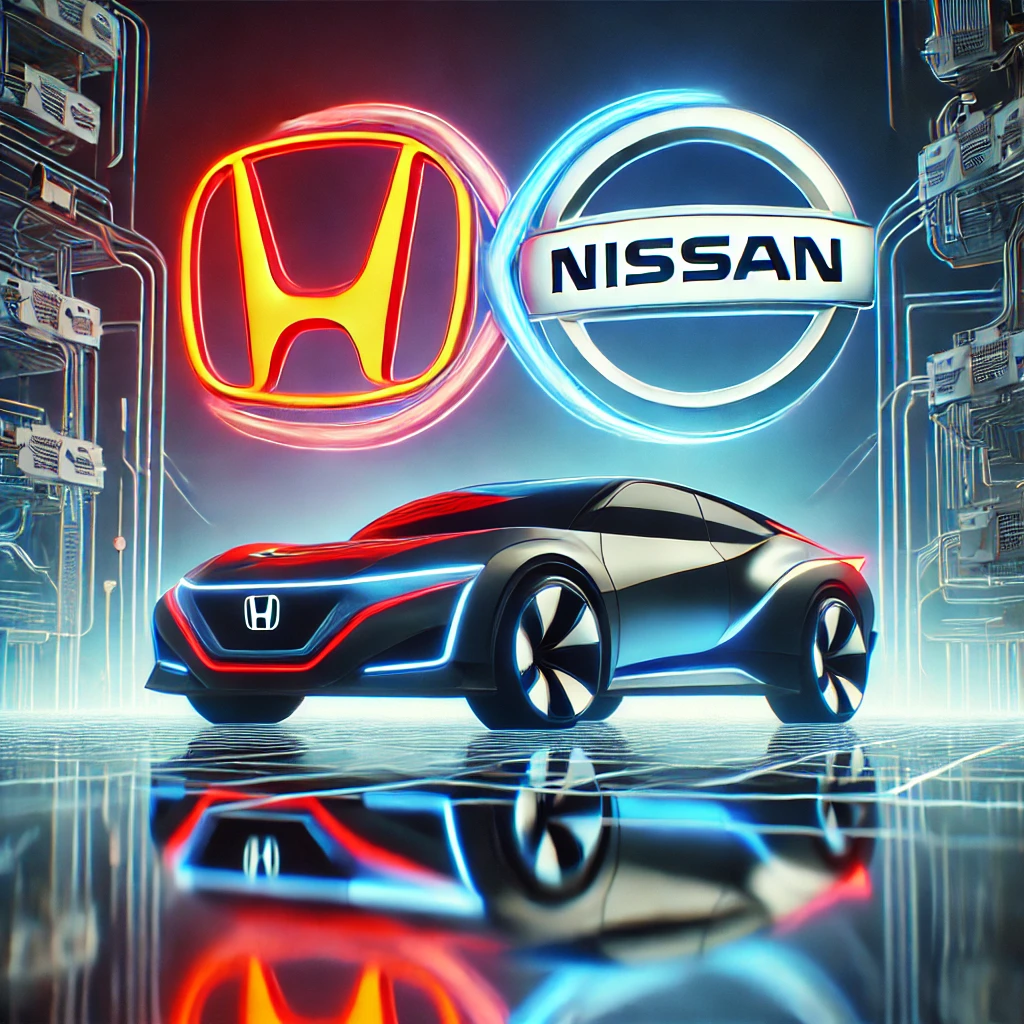Honda and Nissan are making significant strides toward a merger that could create the third-largest automaker in the world by sales. This announcement comes as a lifeline for Nissan, which has been facing financial struggles in recent years, with declining sales and a need for restructuring. Both companies, alongside Mitsubishi, have signed a memorandum of understanding to explore the integration of their operations under a holding company by August 2026.
Why are Honda and Nissan Merging?
Honda and Nissan’s decision to merge comes at a time when the automotive industry is undergoing major changes. The global shift toward electric vehicles (EVs), increased competition from new entrants like Tesla, and the growing importance of automotive software and technology have made it increasingly difficult for smaller automakers to remain competitive. By merging, Honda and Nissan aim to pool their resources, improve operational efficiencies, and better respond to the challenges of the future. The involvement of Mitsubishi also adds a unique dynamic to the partnership, as it strengthens the overall market presence of the new group.
What Will the Merger Mean for Nissan and Honda?
For Nissan, the merger represents a critical opportunity for financial recovery. The company has been grappling with financial losses in recent years, and its decision to merge with Honda is seen as a strategic move to improve profitability and expand its product offerings. By combining forces with Honda, which has a strong reputation for engineering and innovation, Nissan hopes to bolster its position in the global automotive market.
Honda, on the other hand, stands to gain from a more diversified portfolio and increased market share. The merger allows Honda to benefit from Nissan’s technological advancements, particularly in the electric vehicle space. Honda has been actively working on developing EV technology, and this collaboration could accelerate its progress.
Key Benefits of the Honda-Nissan Merger
- Increased Market Share: Together, Honda and Nissan would become the third-largest automaker globally, behind only Toyota and Volkswagen. This increased market share would give the companies more leverage in negotiations with suppliers, distributors, and other partners.
- Cost Efficiency: Merging operations would allow both companies to cut costs by sharing resources, production facilities, and research and development efforts. This could result in significant savings and help the merged entity become more competitive.
- Stronger Electric Vehicle Capabilities: The automotive industry is shifting toward electric vehicles, and Honda and Nissan both recognize the importance of innovation in this space. Their combined efforts could result in the development of more affordable and efficient EVs.
- Global Presence: Honda and Nissan are already established brands in different regions of the world. By merging, they can create a more unified global presence and cater to a wider range of consumers in both developed and emerging markets.
Potential Challenges
While the merger offers several benefits, it also presents challenges. One of the main concerns is maintaining the unique identities of both brands. Honda and Nissan have distinct brand philosophies and target markets, and ensuring that their merger doesn’t result in the loss of these identities will be a delicate task.
Additionally, integrating operations across two large companies can be complicated, with differences in corporate culture, management structures, and operational processes. The success of the merger will depend on how well the companies can align their goals and manage these differences.
What About Mitsubishi’s Role in the Merger?
Mitsubishi’s involvement in the discussions is also noteworthy. While Mitsubishi’s role in the merger isn’t yet fully clear, its participation could provide additional resources and expertise in areas like small cars, hybrid technology, and market penetration in Asia. Mitsubishi has historically struggled to keep pace with its Japanese counterparts, but this merger could help the company strengthen its position in the market.
Frequently Asked Questions (FAQs)
1. Why are Honda and Nissan merging? The merger is aimed at improving operational efficiency, increasing market share, and addressing challenges in the rapidly changing automotive industry, particularly with the shift towards electric vehicles and automotive software.
2. What will happen to Nissan dealerships after the merger? Nissan has already begun restructuring its dealerships, allowing some Infiniti dealerships to merge with nearby Nissan stores. This is part of a larger strategy to streamline operations and reduce costs.
3. When will the Honda-Nissan merger be completed? The companies are working towards completing the merger by August 2026, with discussions expected to continue over the next six months.
4. Will the Honda-Nissan merger affect current customers? While the merger is still in its early stages, customers can expect some changes in product offerings and possibly improvements in the electric vehicle market. However, the brands are likely to maintain their individual identities for the time being.
5. How will the merger impact jobs? Both companies have announced plans for workforce reductions and restructuring, so it’s possible that the merger could result in job cuts. However, the goal is to streamline operations and make the companies more competitive in the long run.
6. What is Mitsubishi’s role in the merger? Mitsubishi’s involvement is still being discussed, but its inclusion could help strengthen the overall partnership, especially in the areas of hybrid vehicles and market presence in Asia.
What Does the Future Hold for Honda, Nissan, and Mitsubishi?
As the merger talks continue, the future of Honda, Nissan, and Mitsubishi will largely depend on how well the companies can integrate their operations. If successful, the merged entity could become a dominant force in the automotive industry, especially as the world continues to move towards electric vehicles and new mobility solutions.
In conclusion, the proposed merger between Honda and Nissan, with Mitsubishi’s potential involvement, represents a bold move to navigate the changing landscape of the automotive industry. The combined efforts of these three companies could lead to innovations that will shape the future of transportation, and consumers may soon see new vehicles that reflect the strength of this partnership.
This merger is not just about overcoming current challenges; it’s about setting the stage for the future of mobility. If the deal moves forward, it could lead to exciting new developments in electric vehicles, autonomous driving technology, and more, making this merger one of the most significant automotive industry events in recent years.



